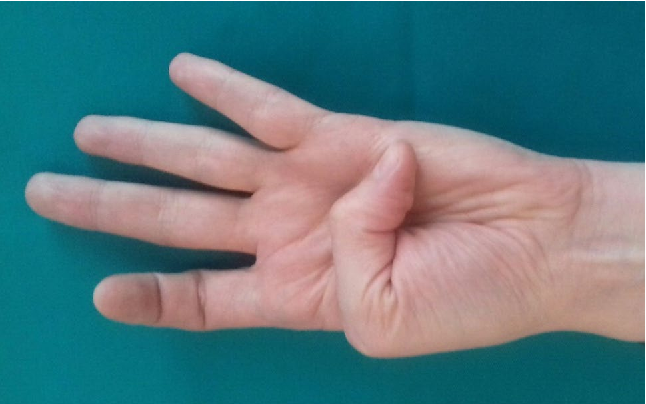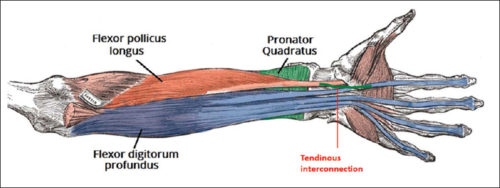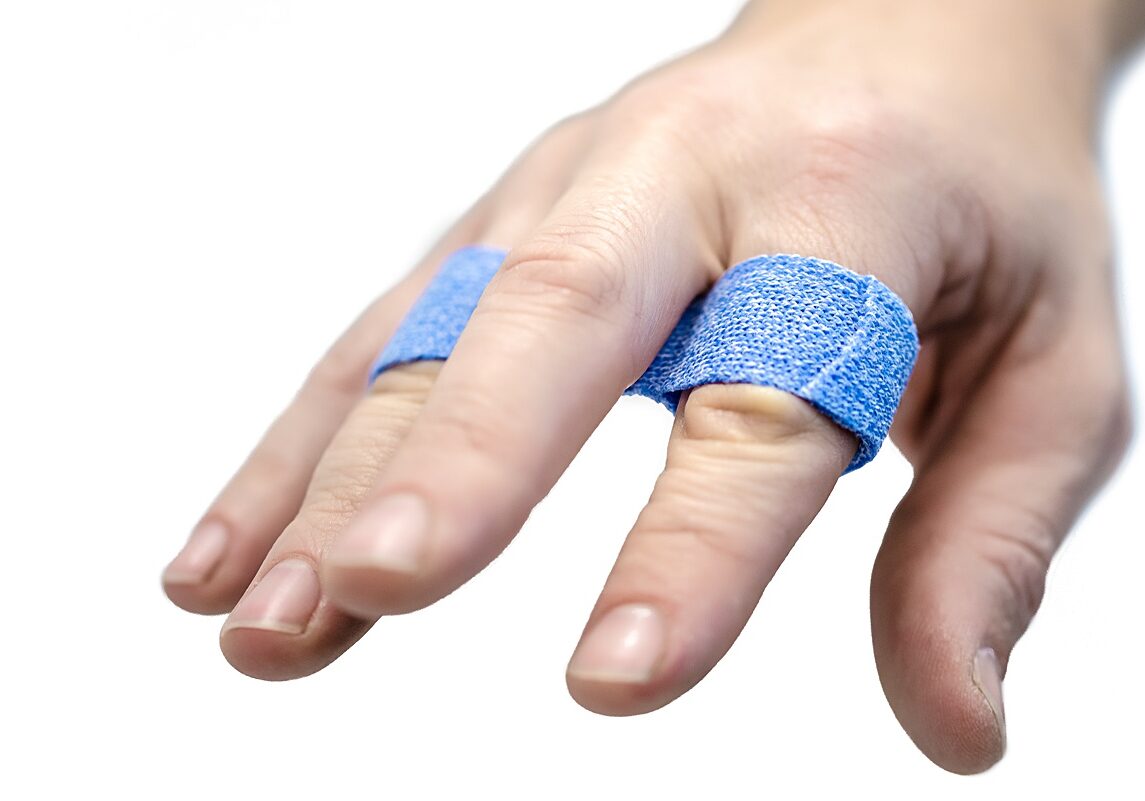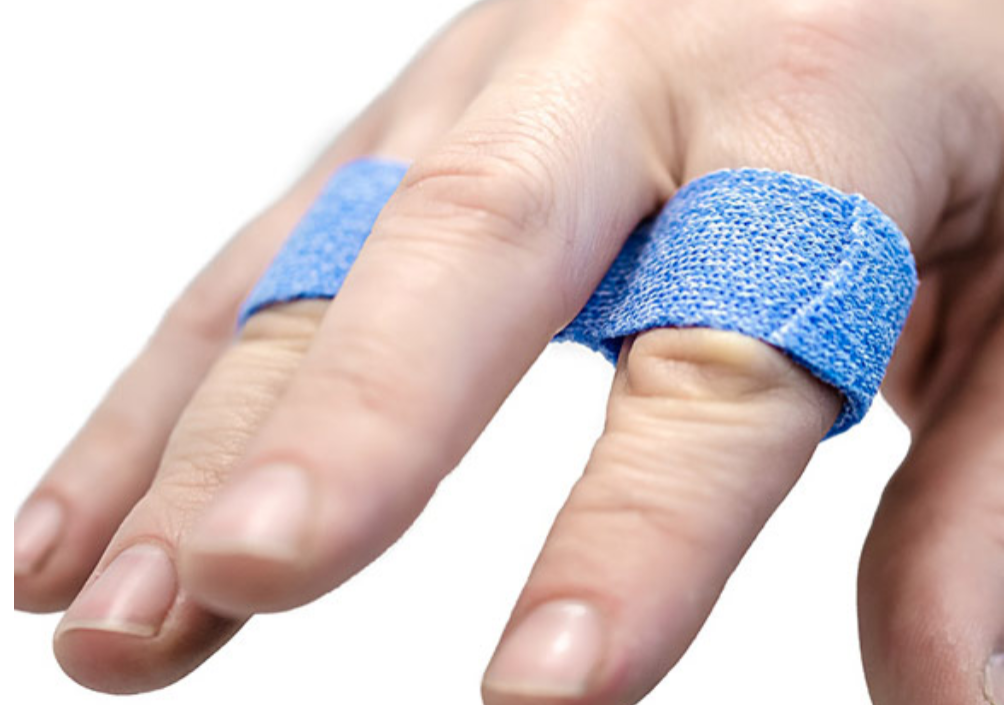By: Ammie Ingwaldson
Level 2 Fieldwork at a hand therapy clinic is a fast paced and continuous learning experience. The perfect example of this occurred last week while observing a therapist provide a client with their home CMC arthritis program. The therapist was educating the client on how to oppose their thumb to their small finger. While we watched them practice, she stated, “you have the Linburg sign!” She quickly turned to me and had me oppose my thumb to the base of my small finger, then confirmed that I had it as well. I began to become slightly concerned. We had not reviewed this sign or condition in school. I began to wonder if it was treatable and if it would affect me. My worries were put at bay when she then showed that she had it as well and provided an explanation of what it entailed.

Linburg Comstock syndrome is an anatomical anomaly connecting the tendons of flexor digitorum profundus (FDP) of the index finger and flexor policis longus (FPL) (Puroshothaman & Powers, 2008). This connection of tendons leads to involuntary flexion of the index finger at the distal interphalangeal (DIP) joint with flexion of the interphalangeal (IP) joint of the thumb. The incidence of this anomaly is 37%, with higher distribution of unilateral sign than bilateral.

In most cases Linburg-Comstock syndrome is asymptomatic, but it can present as pain in the distal forearm, wrist, or hand. Median nerve symptoms, similar to carpal tunnel, can also be present due to tendon inflammation, presence of additional tendons, or synovitis with in the carpal tunnel (Puroshothaman & Powers, 2008). Individuals with repetitive thumb and finger movements, such as musicians, are more susceptible to pain or carpal tunnel like symptoms. Surgical release of the connection of FPL and FDP can be performed to relieve symptoms (Old, Rajaratnam & Allen, 2010).
References
Old, O., Rajaratnam, V., & Allen, G. (2010). Traumatic correction of Linburg-Comstock anomaly: a case report. Annals of the Royal College of Surgeons of England, 92(4), W1–W3. doi:10.1308/147870810X12659688852031
Puroshothaman, P., & Powers, D. (2008) A simple diagnostic test for symptomatic Linburg-Comstock anomaly (Linburg-Comstock test). The Internet Journal of Hand Surgery, 2(2), 1-3.
2 Comments
Leave a Comment
More To Read
Extensor Tendon Repair Protocol (zone 4-7): Immediate Controlled Active Motion (ICAM)
Howell, J.W., Merritt, W. H., & Robinson, S. J. (2005). Immediate Controlled Active Motion Following Zone 4–7 Extensor Tendon Repair. Journal of hand therapy: 18, 182-90. The Skinny- For years immobilization was the standard procedure following extensor tendon injuries in zones 4-7. As expected immobilization caused lengthy rehabilitation times, stiff joints, and tendon adhesions often…
Read MoreDo you know the secret ingredient to recovering from an injury?
Do you know the secret ingredient to recovering from an injury? I will give you a hint it is 5 letters and begins with the letter S. SLEEP Have you ever asked yourself a question – does sleep help injuries heal? This is for you to share with your patients but also serve as a…
Read MoreA randomized clinical trial comparing early active motion programs: Earlier hand function, TAM, and orthotic satisfaction with a relative motion extension program for zones V and VI extensor tendon repairs
By Brittany Day Collocott SJ, Kelly E, Foster M, Myhr H, Wang A, Ellis RF. A randomized clinical trial comparing early active motion programs: Earlier hand function, TAM, and orthotic satisfaction with a relative motion extension program for zones V and VI extensor tendon repairs. Journal of Hand Therapy. 2019. doi:10.1016/j.jht.2018.10.003 The Skinny- This is…
Read MoreSign-up to Get Updates Straight to Your Inbox!
Sign up with us and we will send you regular blog posts on everything hand therapy, notices every time we upload new videos and tutorials, along with handout, protocols, and other useful information.






I love that great fun fact with a quick explanation, great visual representation of the UE possible problems, and treatment options that are available.
Thanks.
I have this issue but not just one or two fingers is every finger in both hands. if i bend thumb even my little finger goes with it. Just wondering how rare it is for that to happen?